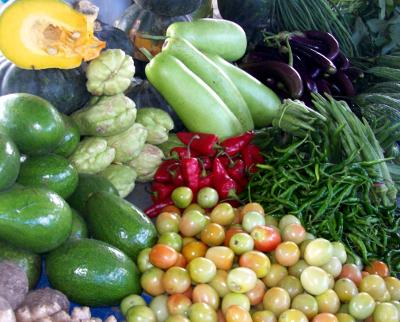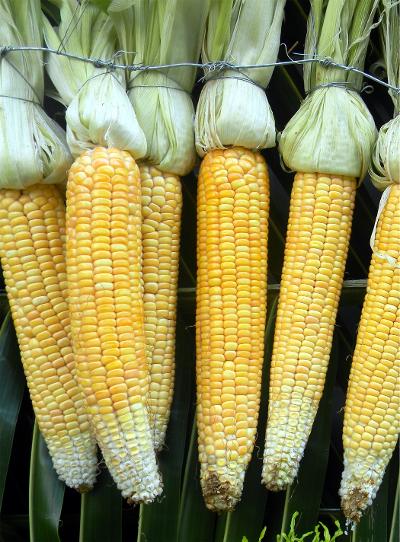“There is much euphoria about developments in biotechnology and about the benefits they promise to bring to society,” warned Reuben Olembo of the United Nations Environment Program. “But there are also risks and dangers associated with this technology.”
Biotechnology is a modern technology that makes use of organisms (or some parts) to make or modify products; improve and develop microorganisms, plants or animals; or develop organisms for specific purposes in a more precise manner.
“All plants, animals and living organisms have cells, the basic unit of life,” explains a fact sheet published by the Biotechnology Information Center of the Laguna-based Southeast Asia Regional Center for Agriculture. “Within cells are hereditary materials generally composed of deoxyribonucleic acids (DNA).
“There hereditary materials (that determine a trait) are called genes. Through biotechnology, the gene fragments can be inserted from one organism to another, within related and unrelated species, to improve specific traits,” it adds.
There are five tools used in biotechnology. There’s gene cloning, where scientists identify and isolate specific DNA fragments which are introduced into a self-replicating genetic element so that the fragment can be reproduced and expressed in the target organism.
Tissue culture is a technique that involves culturing plant parts and animal cells under laboratory conditions. Microbial culture, on the other hand, is a method of multiplying microbial organisms. DNA-marker technology involves the identification of DNA fragments associated with a certain desired trait and its utilization.
Genetic engineering, the most controversial among the tools, is the manipulation, introduction and expression of specific genes or DNA in the target organisms. This is the method used in developing genetically modified organisms (GMOs).
“By transferring genes across species barriers which have existed for eons, we risk breaching natural thresholds against unexpected biological processes,” warned Dr. Peter Wills, a theoretical biologist at Auckland University.
The bone of contention is on GM products. “Any politician or scientist who tells you GM products are safe is either very stupid or lying,” wrote David Suzuki in an article which appeared in “Canadian Media Star.”

Greenpeace, in a press statement, also said: “It’s now possible to do stuff that only writers could imagine before and build up completely new life forms. The argument that we need genetically-modified food to feed the world is complete bull.”
One of the biggest concerns related to GM foods is that an allergen (a protein that causes an allergic reaction) could be accidentally introduced into a food product. Fortunately, scientists know a lot about which foods trigger allergic reactions in adults and children. Ninety percent of all food allergies are associated with only eight foods or food groups: shellfish, eggs, fish, milk, peanuts, soybeans, tree nuts and wheat.
“These, and many other food allergens, are well characterized and so it is extremely unlikely that they would ever be introduced into a GM food,” assures the International Service for the Acquisition of Agri-biotech Applications (ISAAA), also based in Laguna.
“Even so, allergenicity screening is a very important part of safety testing before a crop can enter into the food market,” ISAAA says. “A variety of tests and questions must be considered to determine whether the food poses any increased risk of allergenicity.”
Another concern is antibiotic resistance as some GM crops contain genes for this kind of trait. Scientists, it is said, use this trait as a market to identify cells into which the desired gene has been successfully introduced. There are those who believe that these marker genes could move from GM crops to microorganisms that normally reside in a person’s gut and lead to an increase in antibiotic resistance.
“The likelihood of antibiotic resistance genes moving from GM crops to any other organisms is extremely remote,” ISAAA points out. “Even in the unlikely event that it happens, the impact of this transfer would be negligible, as the markers used in GM crops have limited clinical or veterinary use.”
Foods derived from GM crops have reportedly undergone more testing than any other food in history. Before entering the food market, they are assessed consistent with guidelines issued by several international agencies like World Health Organization, UN Food and Agriculture Organization, and Organization for Economic Cooperation for Development.
These are the guidelines used:
* GM products should be regulated in the same way as foods produced by other methods. The risks associated with foods derived from biotechnology are of the same nature as those for conventional foods.
* These products will be judged on their individual safety, allergenicity, toxicity, and nutrition rather than the methods or techniques used to produce them.
* Any new ingredient added to food through biotechnology will be subjected to pre-market approval in the same way a new food additive, such as a preservative or food color, must be approved before it reaches the food market.
“The products of modern biotechnology cannot be enjoyed fully by the people unless uncertainties regarding their risks to human health and the environment are minimized and managed, if not eliminated,” said Leonardo Montemayor, former agriculture secretary.
The 2010 report of the European Commission Directorate-General for Research and Innovation on GMOs (genetically modified organisms) has this ready answer: “The main conclusion to be drawn from the efforts of more than 130 research projects, covering a period of more than 25 years of research, and involving more than 500 independent research groups, is that biotechnology, and in particular GMOs, are not per se more risky than conventional plant breeding technologies.”







